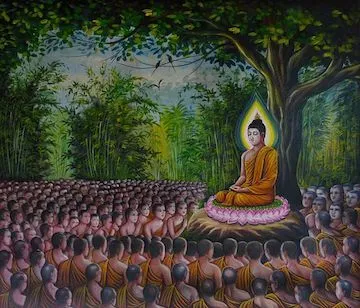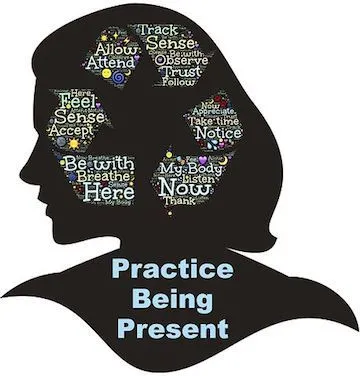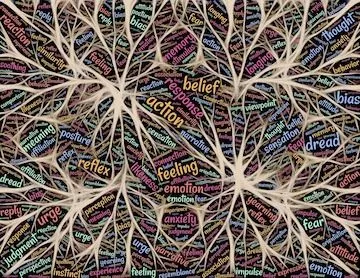7. RIGHT MINDFULNESS

As the seventh part of the Eight-fold Path, Right Mindfulness forms a close link with Right Intention and Right Thought, as they are practiced together. This practice is applied for the mind’s establishment of wholesome qualities and to stabilize the mind itself, in relation to the body, as well as towards feelings:
“And what, friends, is right mindfulness? Here a monk abides contemplating the body as a body, ardent, fully aware, and mindful, having put away covetousness and grief for the world. He abides contemplating feelings as feelings, ardent, fully aware, and mindful, having put away covetousness and grief for the world. He abides contemplating mind as mind, ardent, fully aware, and mindful, having put away covetousness and grief for the world. He abides contemplating mind-objects as mind-objects, ardent, fully aware, and mindful, having put away covetousness and grief for the world. This is called right mindfulness.” — MN III.252
Two important teachings in the Pali Canon cover the topic of mindfulness in great detail, in it’s condensed form in the Satipatthana Sutta (Majjhima Nikaya) and the very elaborate version of it in the Maha-Satipatthana Sutta (Digha Nikaya).
To get an indication of why right mindfulness (and the entire Eight-fold Path) is practiced, the Satipatthana Sutta opens with this great reason:

“Monks, this is the direct path for the purification of beings, for the surmounting of sorrow and lamentation, for the disappearance of pain and grief, for the attainment of the true way, for the realisation of Nibbana—namely, the four foundations of mindfulness.’’ — MN I.56
The four Foundations of Mindfulness (satipatthana) are to be developed as part of Right Mindfullness, and have as their object of contemplation: the body, feeling, mind, and mind-objects:

“And how, monks, does a monk abide contemplating the body as a body? Here a monk, gone to the forest or to the root of a tree or to an empty hut, sits down; having folded his legs crosswise, set his body erect, and established mindfulness in front of him, ever mindful he breathes in, mindful he breathes out.
Their resulting insight that should be the fruit of it’s practice is explained; the insight relates both internally and externally, it’s arising and cessation, and the importance of non-clinging [to anything in this world]:

Or else mindfulness that ‘there is a body’ is simply established in him to the extent necessary for bare knowledge and mindfulness.
And he abides independent, not clinging to anything in the world.” — MN I.56
The contemplation of the mind [as mind] is a more complex practice relating to the hindrances of lust, hate, and delusion; as well as the states of the mind as a whole:

“And how, monk, does a monk abide contemplating mind as mind?
He understands liberated mind [due to meditative attainment] as liberated mind, and non-liberated mind as non-liberated mind.” — MN I.59
The mind-objects are another form of contemplative practice that are used to accentuate the five hindrances (sensual desire, ill will, laziness, restlessness, and doubt) that keeps one back from going further along the path:

“And how, monks, does a monk abide contemplating mind-objects as mind-objects? Here a bhikkhu abides contemplating mind-objects as mind-objects in terms of the five hindrances. And how does a bhikkhu abide contemplating mind-objects as mind-objects in terms of the five hindrances?
The extreme importance of the four Foundations of Mindfulness is given in the conclusion of the teaching:

“Monks, if anyone should develop these four foundations of mindfulness in such a way for seven years [let alone for 7 days!], one of two fruits could be expected for him: either final knowledge here and now, or if there is a trace of clinging left, non-return.” — MN I.62
In all, Right Mindfulness is a key practice on the noble Eight-fold Path.


The Nikayas are Buddhist books that form the earliest Buddhist canon of scriptures containing the teachings of the Buddha.
First of all, it really helps to have these books in digital form, so you can search for a particular word easily and be able to read how it is mentioned and in what context it is placed in the teachings of the Buddha.
The following English translations of the primary texts are available and used:
- The Connected Discourses of the Buddha: A Translation of the Samyutta Nikaya (SN)
- The Long Discourses of the Buddha: A Translation of the Digha Nikaya (DN)
- The Middle-Length Discourses of the Buddha: A Translation of the Majjhima Nikaya (MN)
- The Numerical Discourses of the Buddha: A Translation of the Anguttara Nikaya (AN
B. The Virtue and Moral Discipline aggregate of training
- Right livelihood (samma-ajiva)
C. The Concentration aggregate of training
- Right effort (samma-vayama)
- Right mindfulness (samma-sati)
- Right concentration (samma-samadhi)
The Ten-fold Path consists of two additional ‘folds’:
- Right knowledge / wisdom (samma-nana)
- Right liberation / release (samma-vimutti)
- AN = Anguttara Nikaya,
- DN = Digha Nikaya,
- MN = Majjhima Nikaya,
- SN= Samyutta Nikaya); followed by book number in roman capitalized numerals and verse number (for example, AN I.30 = Anguttara Nikaya book 1 verse 30).
Note: Quotations follow the PTS (Pali Text Society) naming and numbering format:
I will flag comment spam at 1% strength. If you keep on spamming my post I will flag you at 100%. I don't care if you have limited English abilities write a couple sentences about this article, no copy-paste please. I will flag: one sentence comments, links to your blog and begging for up-votes and follows. Also I will flag comments that have nothing to do with my blogs article. I will also check your comment section to see if you have been comment spamming on other blogs.


 A link to My Blog
A link to My Blog